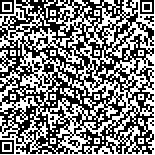| Quote
: |
陈博威,周胜强,易健,罗琳,刘柏炎,谢勇.补阳还五汤对Cav-1敲除小鼠脑缺血后mTOR通路的影响[J].湖南中医药大学学报英文版,2020,40(4):418-422.[Click to copy
] |
|
| |
|
|
| This paper
:Browser 2775times Download 881times |
| 补阳还五汤对Cav-1敲除小鼠脑缺血后mTOR通路的影响 |
| 陈博威,周胜强,易健,罗琳,刘柏炎,谢勇 |
| (湖南中医药大学, 湖南 长沙 410208;湖南省中医药研究院附属医院, 湖南 长沙 410006;湖南中医药大学第一附属医院, 湖南 长沙 410007;湖南中医药大学, 湖南 长沙 410208;益阳医学高等专科学校, 湖南 益阳 413000;湖南中医药大学第二附属医院, 湖南 长沙 410005) |
| 摘要: |
| 目的 探讨小窝蛋白(caveolin-1,Cav-1)对脑缺血后哺乳动物雷帕霉素靶蛋白(mammalian target of rapamycin,mTOR)信号通路的影响及补阳还五汤抗脑缺血的可能作用机制。方法 将Cav-1基因敲除(knock out,KO)与野生型(wild type,WT)小鼠随机分为KO假手术组、KO模型组、KO补阳还五汤组(补阳组)、WT假手术组、WT模型组及WT补阳组。采用大脑中动脉栓塞法建立脑缺血模型,干预14 d后观察小鼠神经功能评分;免疫组化检测大脑mTOR、磷酸化核糖体S6蛋白激酶(phospho-ribosomal S6 kinase,p-S6K1)、磷酸化真核细胞翻译起始因子4E结合蛋白-1(phospho-eukaryotic initiation factor 4E-binding protein 1,p-4E-BP1)的蛋白表达;qRT-PCR检测大脑mTOR的mRNA水平。结果 与同类假手术组比较,其他4组神经功能评分、mTOR、p-S6K1、p-4E-BP1蛋白表达及mTOR mRNA表达明显上升(P<0.01);与同类模型组比较,KO补阳组、WT补阳组神经功能评分明显下降(P<0.01),各蛋白表达与mRNA表达明显上升(P<0.01);与WT模型组比较,KO模型组神经功能评分上升(P<0.05),各蛋白与mRNA表达明显下降(P<0.01);与WT补阳组比较,KO补阳组神经功能评分明显上升(P<0.01),各蛋白及mRNA明显下降(P<0.01)。结论 Cav-1基因的缺失会导致mTOR通路活性降低并加重脑缺血后神经功能损伤;补阳还五汤可能通过Cav-1调控mTOR信号通路的活性,发挥抗脑缺血损伤的作用。 |
| 关键词: 脑缺血 mTOR信号通路 补阳还五汤 Cav-1基因敲除 |
| DOI:10.3969/j.issn.1674-070X.2020.04.007 |
| Received:November 12, 2019 |
| 基金项目:国家自然科学基金项目(81273989);湖南省自然科学基金项目(2018JJ2413、2018JJ3383);湖南省中医药管理局项目(2015140)。 |
|
| Effects of Buyang Huanwu Decoction on mTOR Pathway in Cav-1 Knock Out Mice after Cerebral Ischemia |
| CHEN Bowei,ZHOU Shengqiang,YI Jian,LUO Lin,LIU Baiyan,XIE Yong |
| (Hunan University of Chinese Medicine, Changsha, Hunan 410208, China;The Affiliated Hospital of Hunan Provincial Academy of Traditional Chinese Medicine, Changsha, Hunan 410006, China;The First Affiliated Hospital of Hunan University of Chinese Medicine, Changsha, Hunan 410007, China;Hunan University of Chinese Medicine, Changsha, Hunan 410208, China;Yiyang Medical College, Yiyang, Hunan 413000, China;The Second Affiliated Hospital of Hunan University of Chinese Medicine, Changsha, Hunan 410005, China) |
| Abstract: |
| Objective To investigate the effects of caveolin-1 (Cav-1) on mammalian target of rapamycin (mTOR) signaling pathway after cerebral ischemia and the possible mechanism of Buyang Huanwu Decoction (BHD) in anti-cerebral ischemia. Methods Cav-1 knock out mice (KO) and wild type mice (WT) were randomly divided into a KO sham operation group, a KO model group and a KO BHD group, a WT sham operation group, a WT model group, and a WT BHD group. Cerebral ischemia model was established by middle cerebral artery occlusion (MCAO). After 14 days of intervention, the neurological function scores of each group were observed. The protein expression of mTOR, phospho-Ribosomal protein S6 kinase beta-1 (p-S6K1), phospho-eukaryotic initiation factor 4E-binding protein 1 (p-4E-BP1) were detected by immunohistochemical method, and mTOR mRNA was detected by qRT-PCR. Results Compared with the sham group, the neurological function scores, the expression of mTOR, p-S6K1, p-4E-BP1 protein and mTOR mRNA of the other 4 groups were significantly increased (P<0.01). Compared with the similar model group, the neurological function scores of the KO BHD group and the WT BHD group decreased significantly (P<0.01). The expression of each protein and mRNA increased significantly (P<0.01). Compared with the WT model group, the neurological function scores of the KO model group increased (P<0.05), and the expression of each protein and mRNA decreased significantly (P<0.01). Compared with the WT BHD group, the neurological function scores of the KO BHD group increased significantly (P<0.01), and each protein and mRNA decreased significantly (P<0.01). Conclusion The deletion of Cav-1 gene can reduce the activity of mTOR pathway and aggravate the neurological damage after cerebral ischemia; BHD may regulate the activity of mTOR signaling pathway through Cav-1 and play a role in resisting cerebral ischemic injury. |
| Key words: cerebral ischemia mTOR signaling pathway Buyang Huanwu Decoction Cav-1 gene knock out |
|

二维码(扫一下试试看!) |
|
|
|
|


